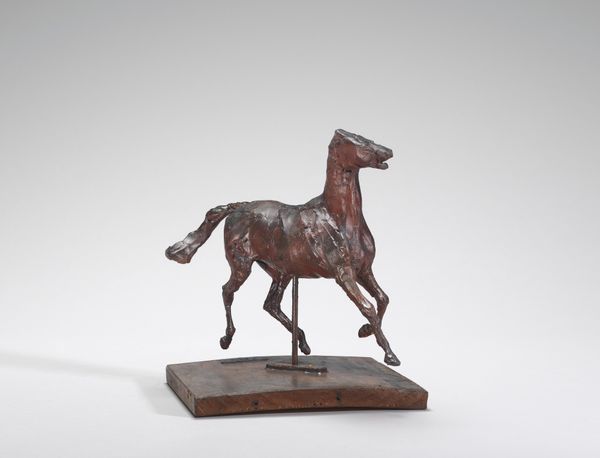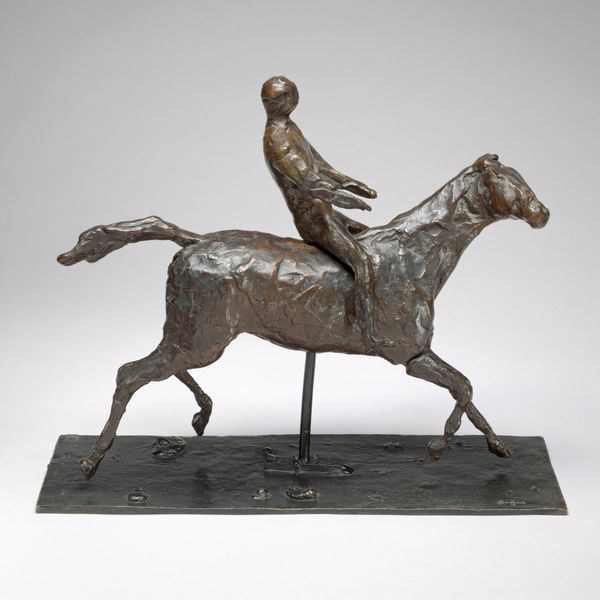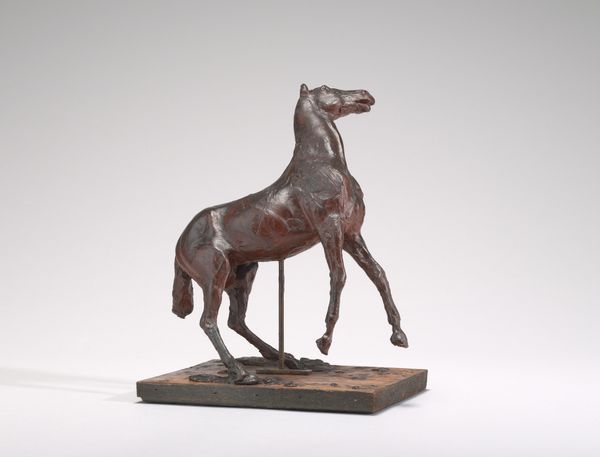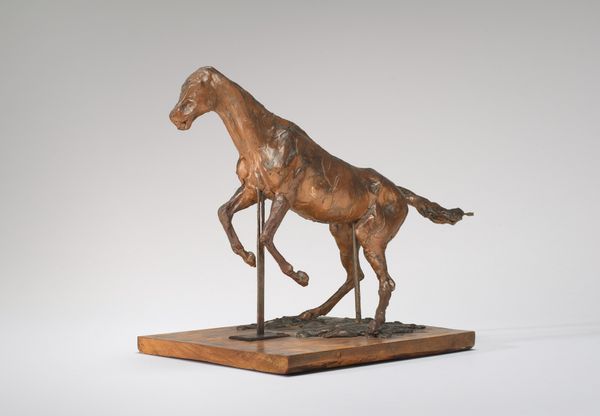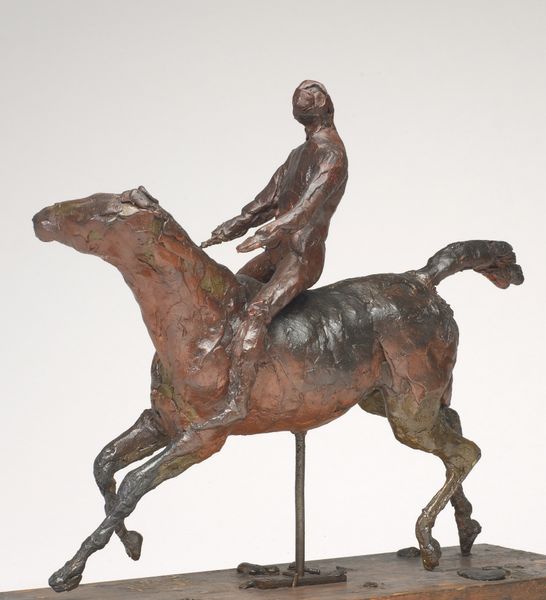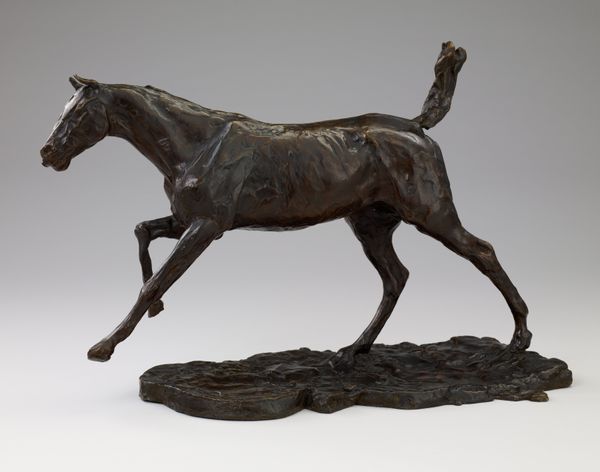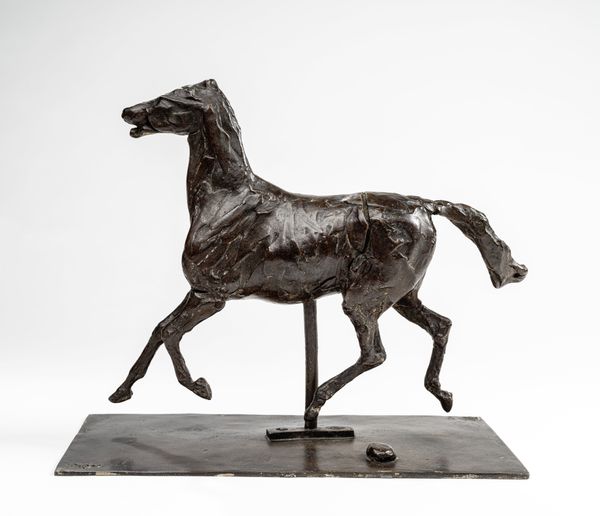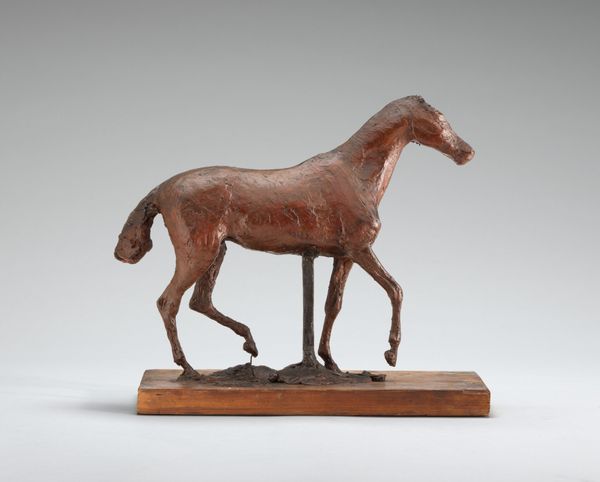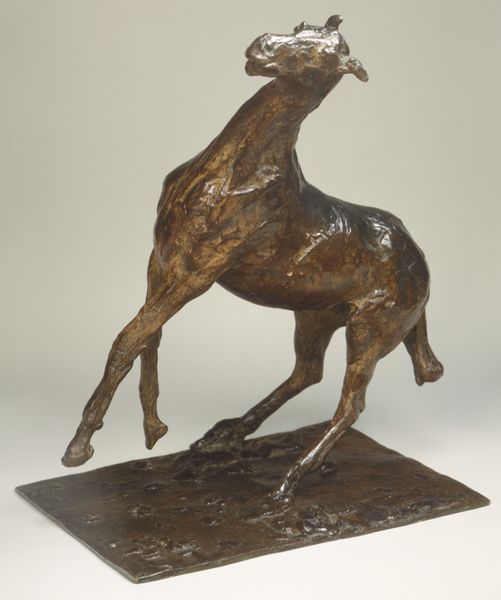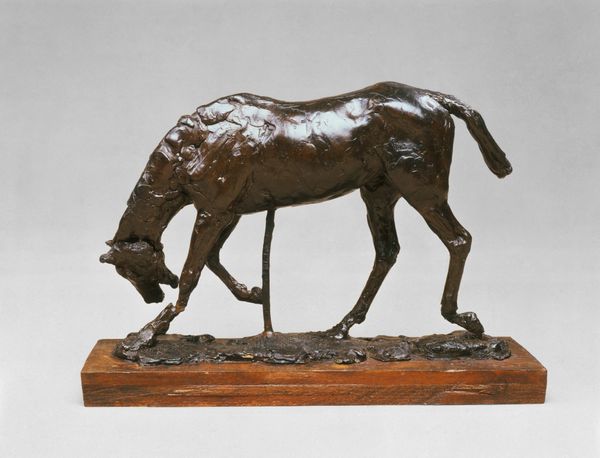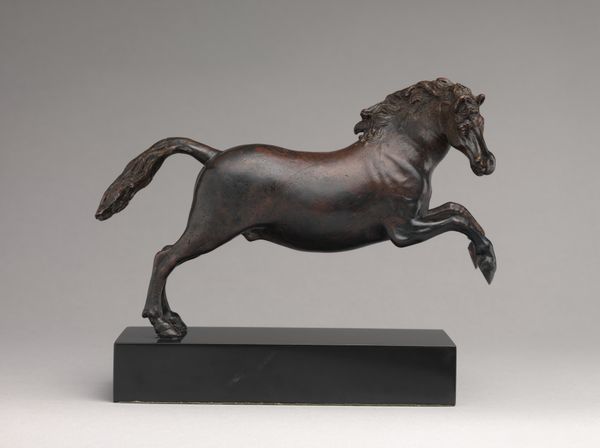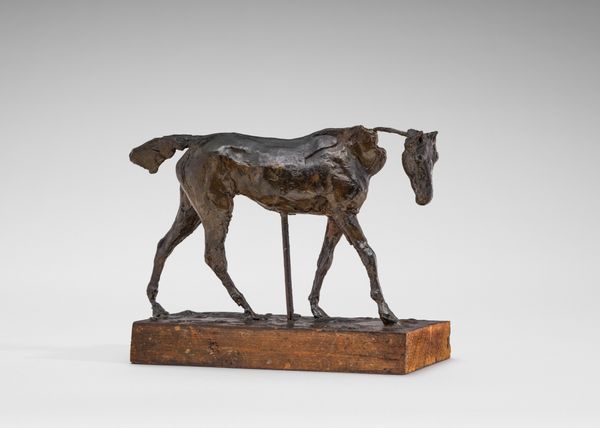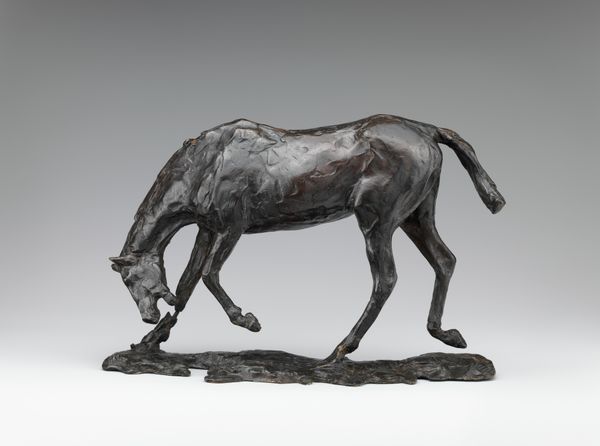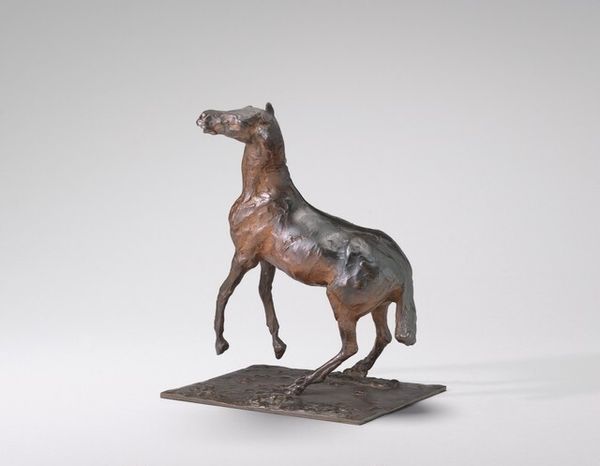
Horse Galloping, Turning the Head to the Right, the Feet Not Touching the Ground c. mid 1870s
0:00
0:00
bronze, sculpture
#
portrait
#
statue
#
impressionism
#
sculpture
#
bronze
#
figuration
#
sculpture
#
statue
Dimensions: overall without base: 23.4 x 9.5 x 33.2 cm (9 3/16 x 3 3/4 x 13 1/16 in.)
Copyright: National Gallery of Art: CC0 1.0
Edgar Degas created this bronze sculpture of a horse and rider, sometime in the late 19th century. The sculpture captures the horse in full gallop, a moment of dynamic movement, emphasized by the textured surface of the bronze that catches light and shadow, enhancing the sense of motion. The composition reveals Degas' interest in unconventional perspectives, a hallmark of his engagement with Impressionism. The raised head of the horse and the awkward angle of the jockey’s torso, destabilizes traditional equestrian sculpture. Degas captures a fleeting moment using the solidity of bronze to reflect the influence of photography on art, a new way of freezing motion. The sculpture challenges fixed notions of balance and representation. The thin metal rod supporting the horse is not hidden but made visible, disrupting the illusion of effortless grace typically associated with equestrian art. The rough, unfinished texture invites us to consider the processes of making, a modern focus on materiality and the artist's hand.
Comments
No comments
Be the first to comment and join the conversation on the ultimate creative platform.
